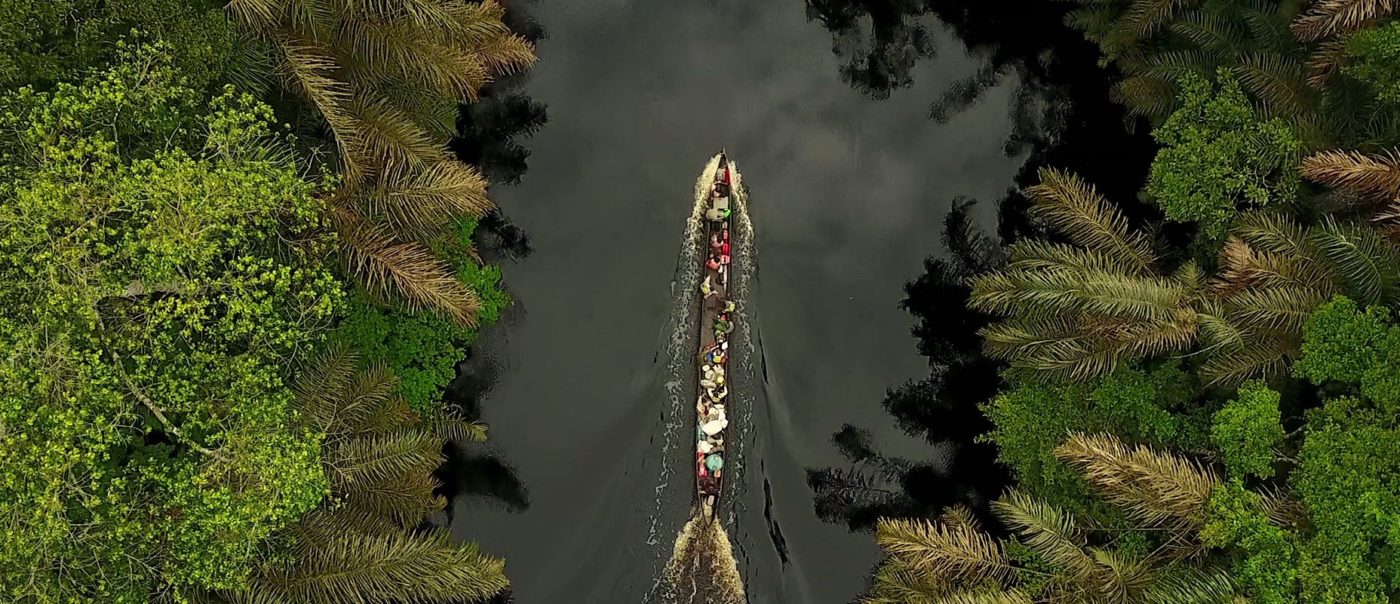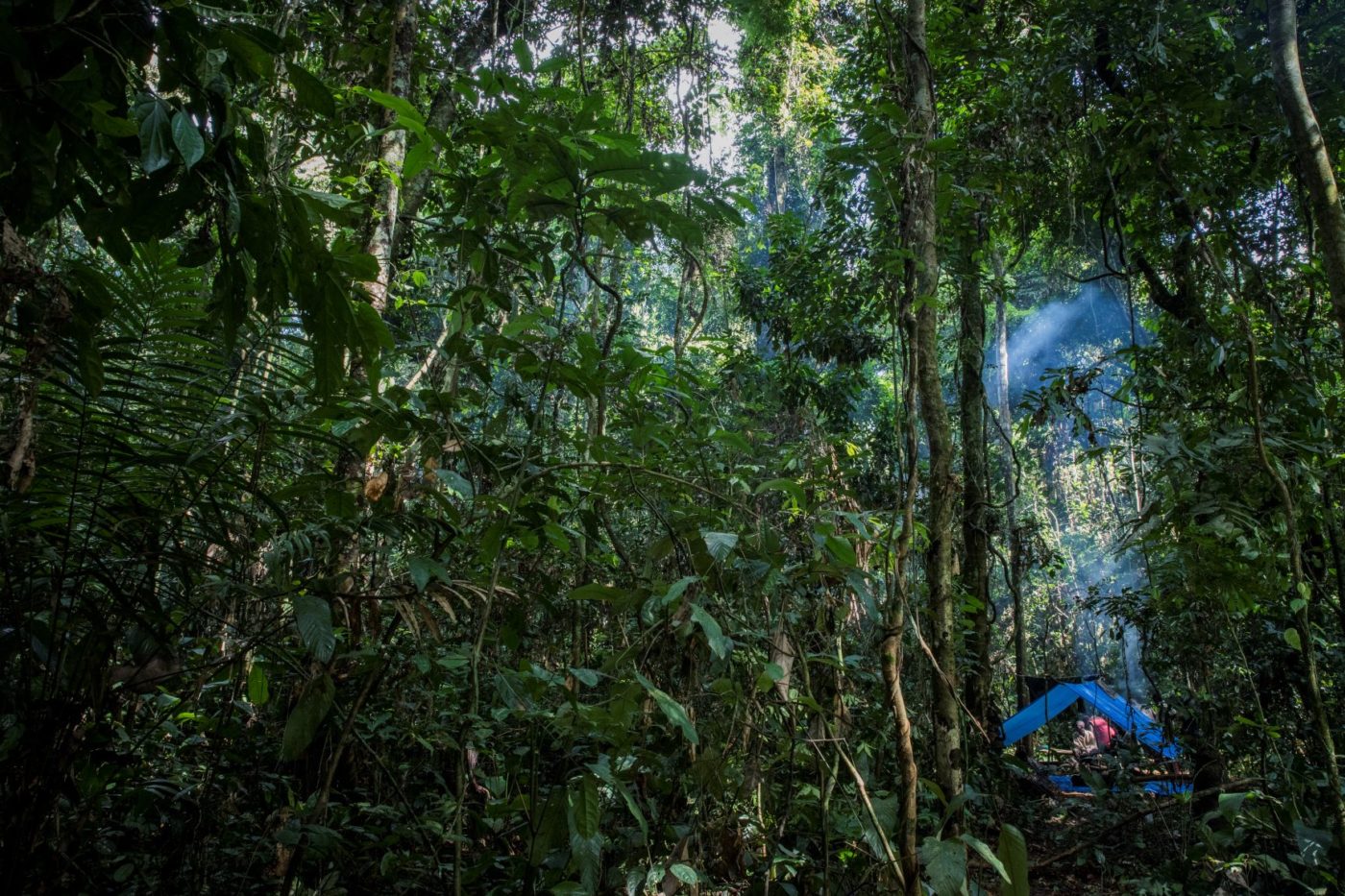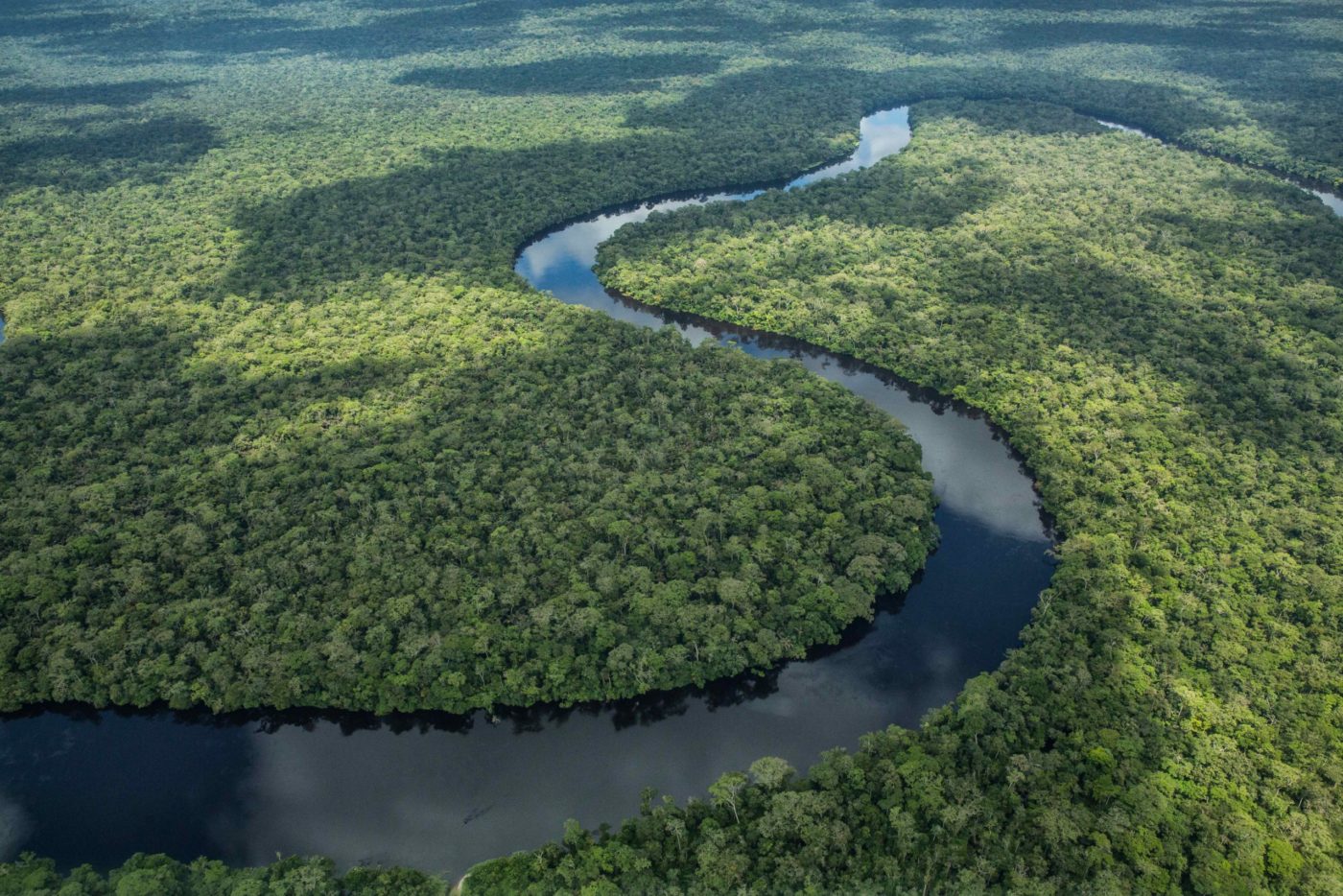The sound of the rainforest
You may hear them, but you won’t see them. The forest is full of sounds: birds are whistling and chirping, further to the left a distant hissing and the alarm call of a Mangaby. This is the song of the Salonga National Park. It is a place where animals live in secrecy.
Since the early hours of the morning, WWF employee Samy Matungila has been on the forest path in the thicket of the rainforest with a team of six plus a cook and a dozen porters. The treetops above them creak, the leaves on the ground rustle. Butterflies dance in a small clearing and mosquitoes buzz over the path in front of them. Nothing else to see. But they know: bonobos, antelopes and even forest elephants live here. The latter in particular are rarely observed, which is good news in this case, because an encounter can be dangerous to humans.
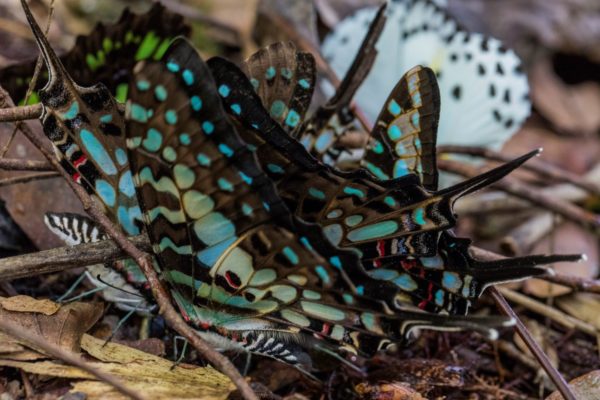
One of many species of butterflies in Salonga National Park.
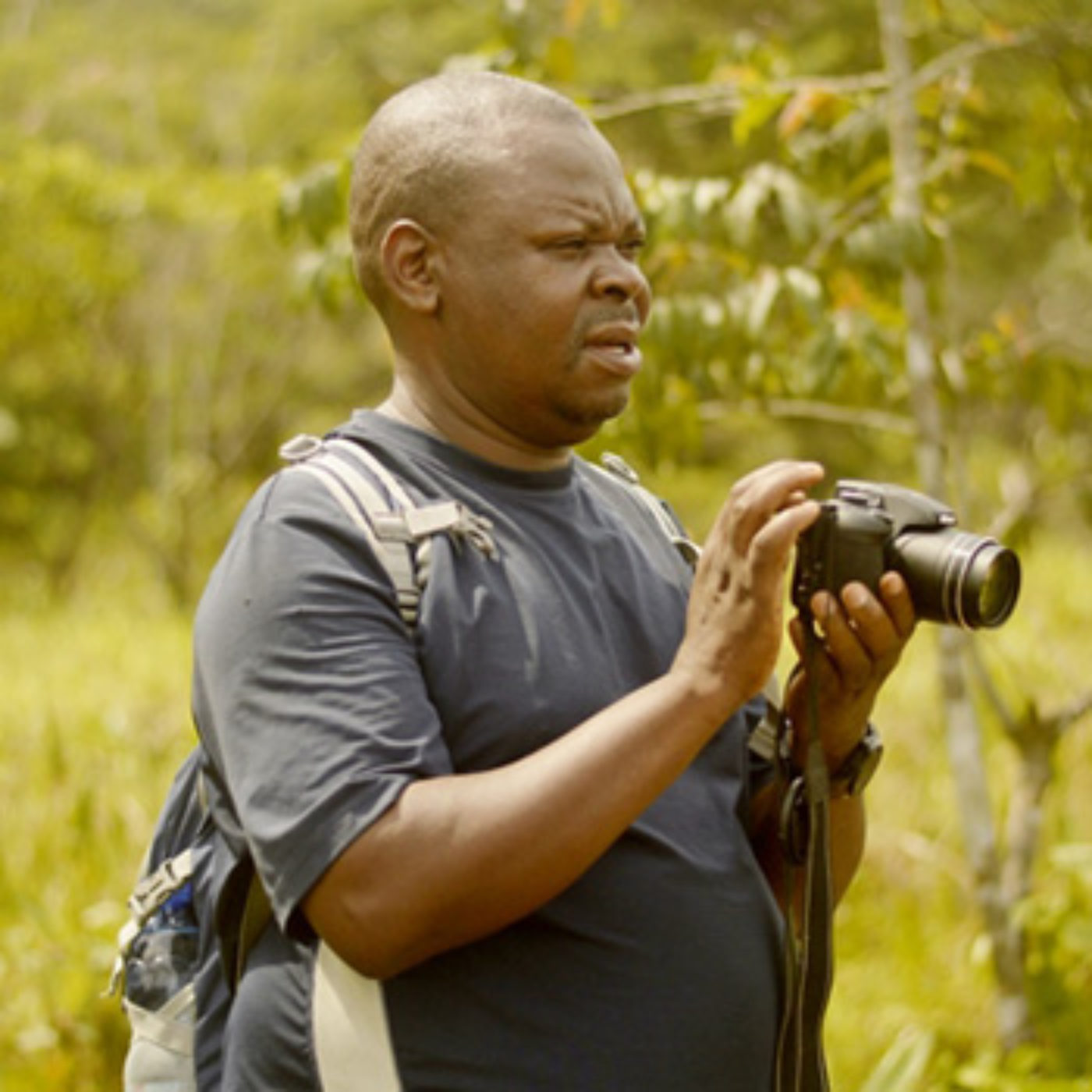
Samy Matungila, Salonga National Park's monitoring expert, at work at Bekalikali Bai.
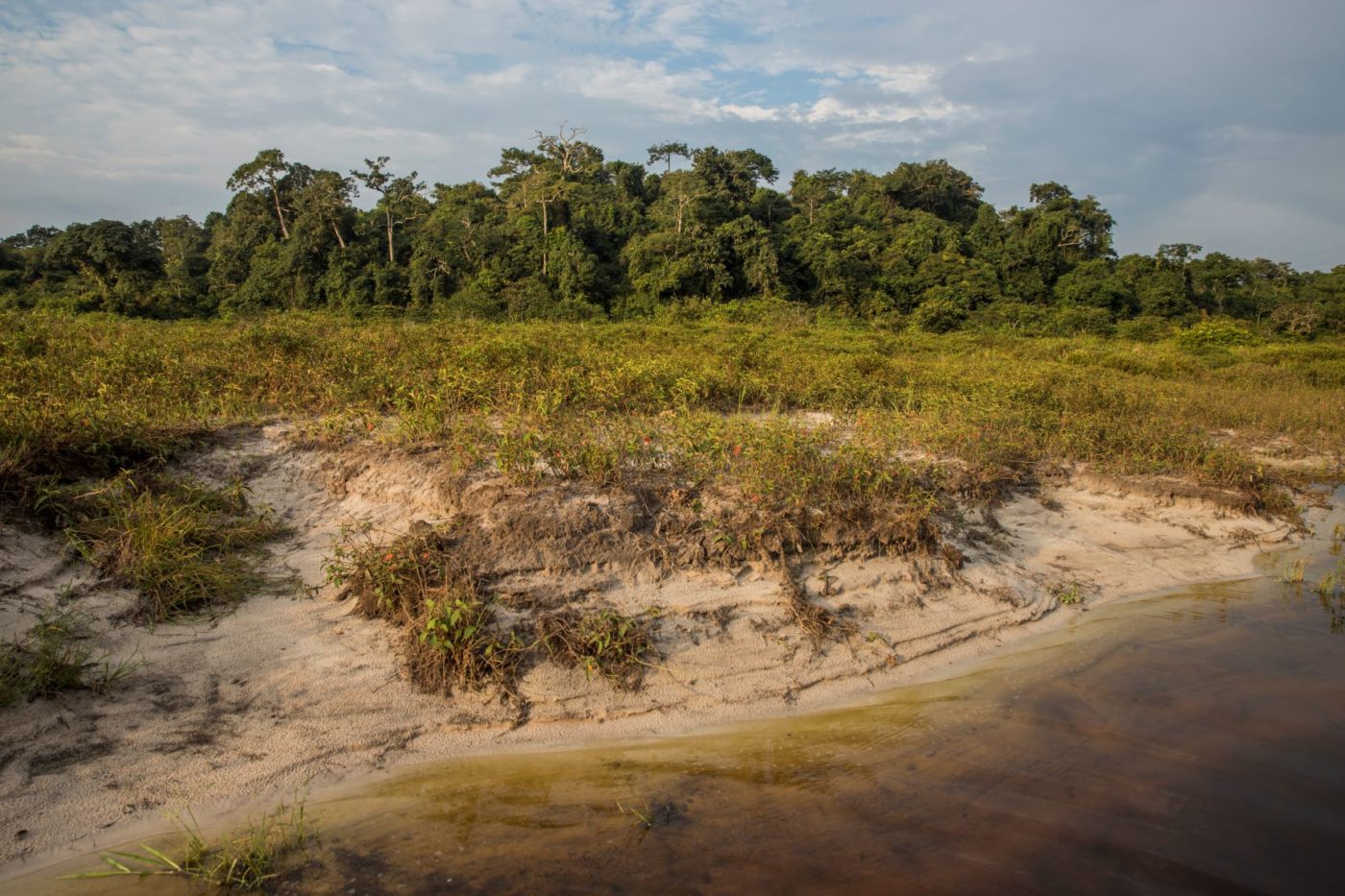
Particularly interesting for observing animals are the Park's clearings called "Bais".
Working in Salonga
Samy Matungila knows Salonga well for having worked there already in 2003-2004 during the MIKE (Monitoring of illegal killing of elephants) inventories. At the moment his biggest concern is not an unintended encounter with a forest elephant, but to find the camera traps that the team set up in the area three weeks ago, as Samy is one of those participating in the largest project to date aiming to record the animal species in Salonga National Park, called ecological monitoring or “biomonitoring” for short.
Recording animal species is easier said than done. It’s not only a scientific challenge, but also a logistical one. Especially when it comes to monitoring in a still pristine lowland rainforest in the middle of the Congo basin. The size of the area that Samy Matungila’s team is monitoring, namely Salonga National Park’s southern block, is impressive: 17.127 km2 – that is half the size of Belgium.
About a decade after the MIKE monitoring, WWF and scientists from renowned research institutions, together with the Congolese Institute for Nature Conservation (ICCN), planned and carried out the inventory. Under the lead of the Max Planck Institute and the University of Munich the first data was analysed. The collection of data in the field alone took 18 months: 160 camera traps were placed at 743 locations and allowed to record 16.700 video clips. In total, more than 700 people (coming almost entirely from the communities around the park) participated in the project – all for one goal: to obtain a reliable picture of the biodiversity in this part of the Salonga National Park.
An aerial view on the Bekalikali clearing ("bai") in Salonga National Park.
Protecting a UNESCO world heritage
This biodiversity must be protected -, as the national heritage of the Democratic Republic of the Congo and as a World Heritage Site for humanity. Collected regularly, the data provides researchers and conservationists with urgently needed information: Is Salonga still a safe place for bonobos, or is their population declining? Have measures to stabilize animal populations taken effect, so there are more forest elephants? Do species live here that have not yet been discovered and for which special protection may be needed? Samy hopes that the cameras have provided good pictures that will help to protect the Salonga National Park. A few more metres and they should have reached the first camera trap that day. It is exhausting to make your way through the dense trees, bushes and lianas. There is tension in the air, but also something like anticipation. The cameras have now been at their location for 25 days. Today the videos will be backed up. What will they show? What’s going on here day and night? The answers to these questions are still to come. Today, the videos will be sighted and will provide answers to all these questions.
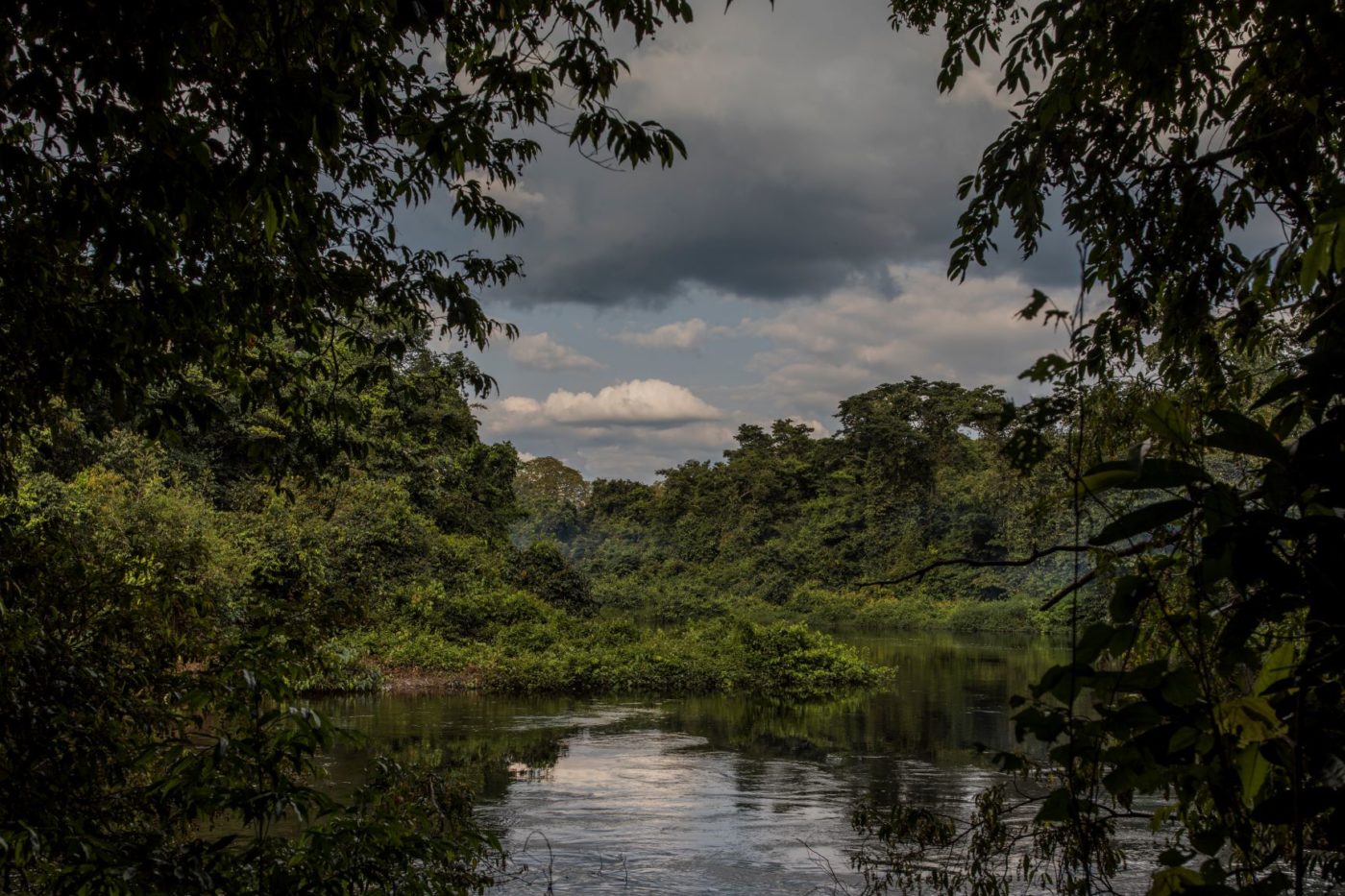
The dense tropical rainforest of Salonga, where the best way to move around is by boat on its many rivers.
Biomonitoring with camera traps
With the help of his GPS device, Samy has located the first two cameras and the men start their work in the sweltering rainforest. On this day they will look for more camera traps, which are located on the transects at a distance of six kilometres. These transects were previously planned on the computer and lie like a virtual grid over this part of the forest.
But how can camera trap images be used to determine the frequency and density of animal species? A photograph alone does not reveal how common the identified animal, for example a Congo peacock, is in a landscape. The clever thing about the biomonitoring method in Salonga is as simple as it is ingenious:
Cameras in the surveyed area are all continuously active at the same time. Only during this time can a camera trap be triggered by movements. It now films what is happening in its surroundings. In this way, videos of the area of forest covered are taken whenever an animal moves past the trap.
However, when analysing the data, only predetermined snapshots of time are considered, for example every fifth second in the defined time window. By that, one advantage is gained: each individual is only counted once at any given snapshot. It cannot be in different places at the same time!
Rewarding footage
After several days in the forest of Salonga, Samy is back at the base camp. He inserts a memory card into the laptop on his knees and uploads the data from a camera trap in a forest clearing. Double click on the file and the first video sequences are played. Nothing, … a shaking leaf, … again, nothing.
But then – a few long minutes later – the exclamation: “Super, that’s fantastic”. Samy leans forward and stares spellbound at the video. At the edge of the screen the date and hour of the recording is written: 3 o’clock in the morning. In front of the dark background a large grey figure is clearly visible. A forest elephant looks in the direction of the camera and then begins to eat. “He plucks grass with his trunk and puts it into his mouth. He eats, quite peacefully,” Samy comments on the event. After the hard work of the last few days in the forest, this new working day at Salonga starts on a very pleasant note.
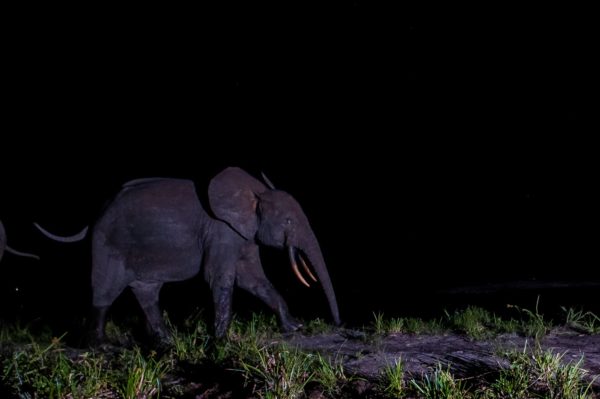
Elephants are equally active during both day and night time.
Video footage of the Salonga biomonitoring


